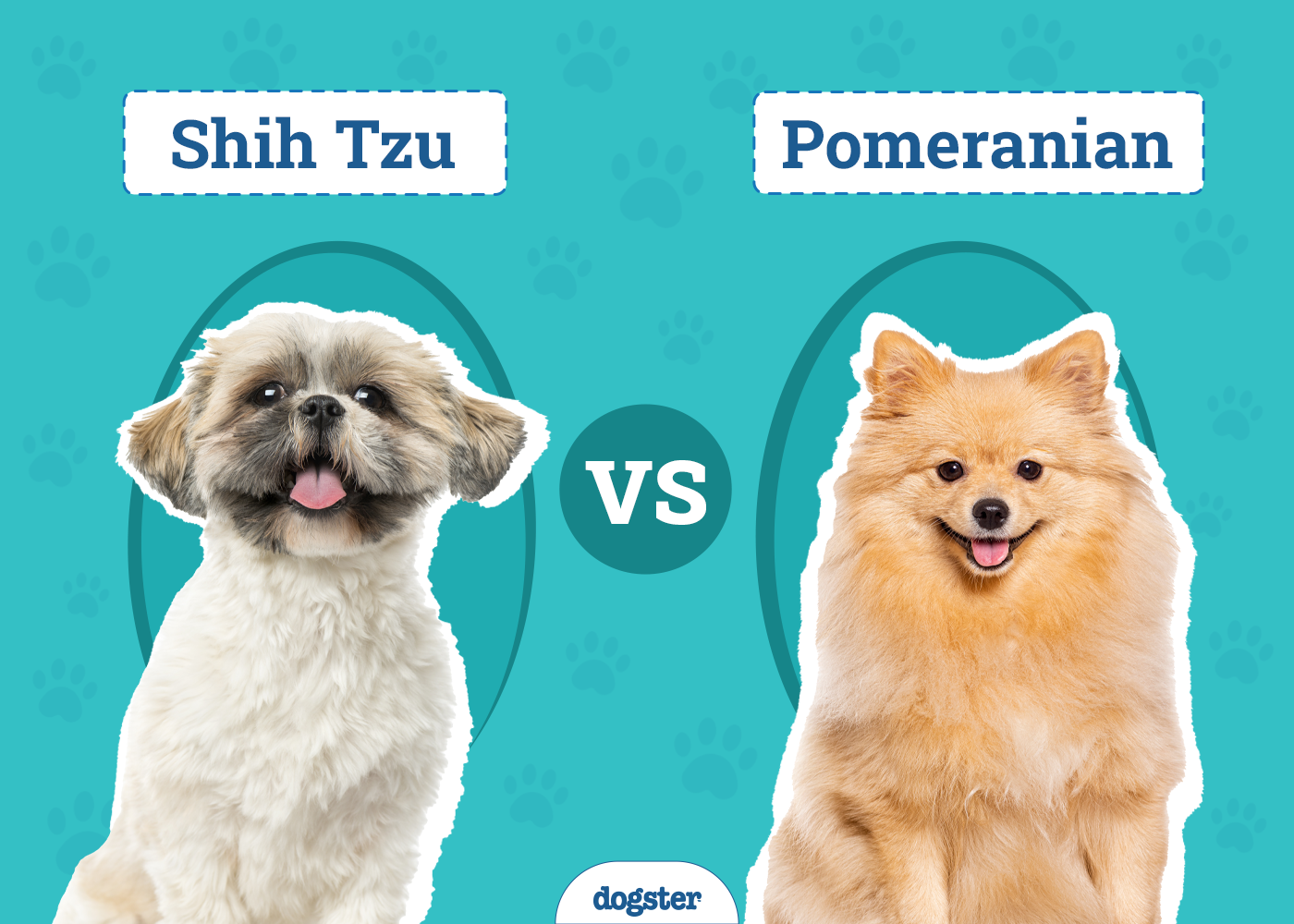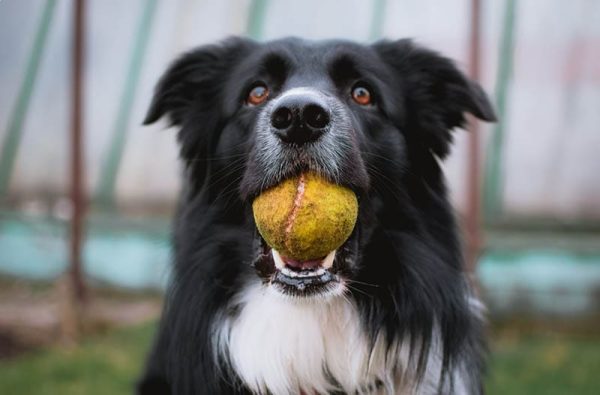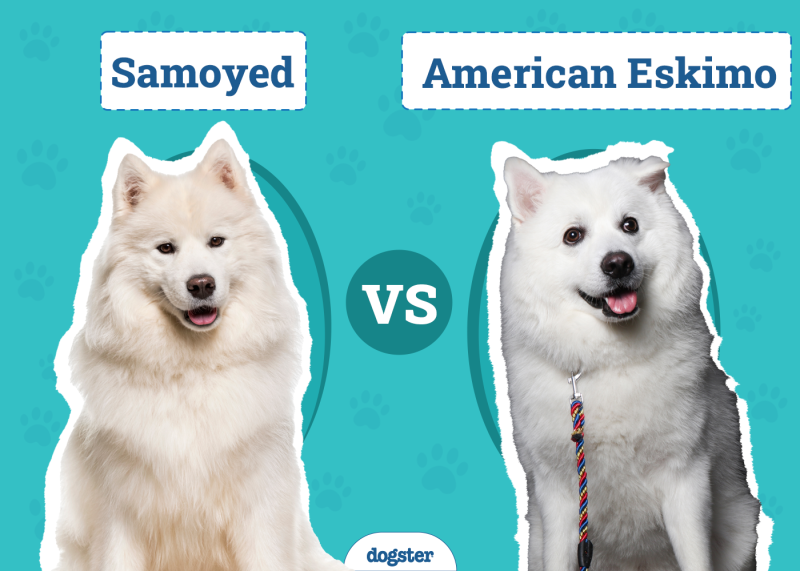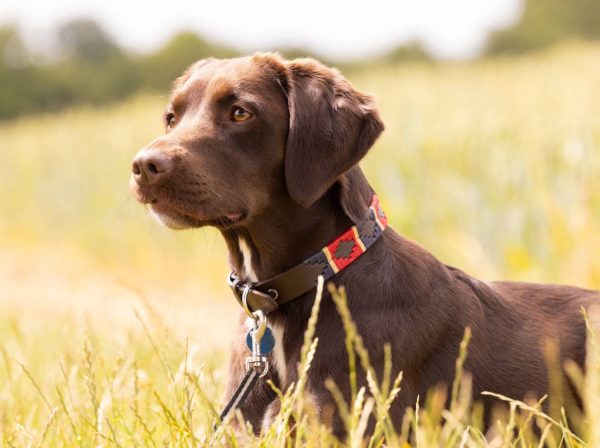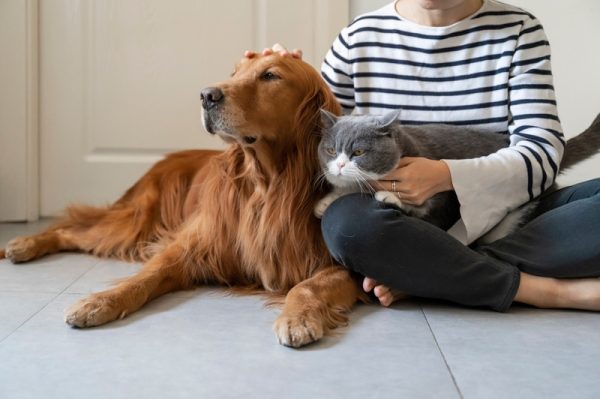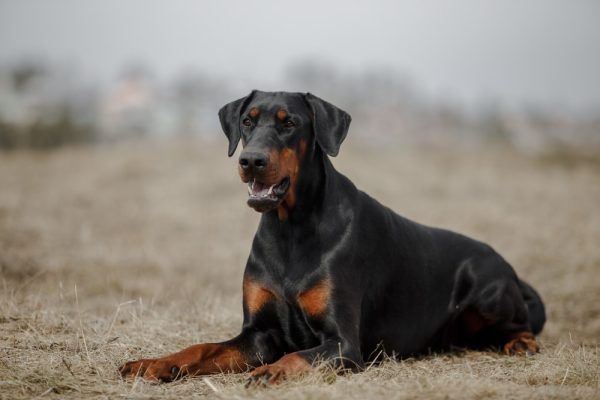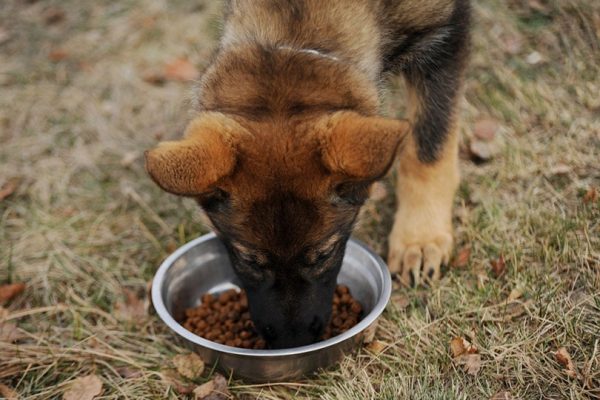In this article
View 3 More +The Shih Tzu and Pomeranian are both popular dog breeds with a few things in common—they’re both toy breeds that adapt well to apartment living and are adorable, loyal, and playful. They’re also very different in a number of ways and understanding these differences can make it easier to decide which breed might be right for you.
All that said, we’d always caution against choosing a dog solely on what breed they are. Getting to know the dog, what they’re all about, and how well the two of you “gel” is the best way to make sure you’re the right fit for each other.
We get it—many people dream about owning a specific breed of dog for many years, but the dog’s breed can’t tell you all you need to know about them before you make your decision—it can only give you an idea.
In this post, we’ll explain what Shih Tzus and Pomeranians are generally like so you can get an idea of which one may be best for you but be sure to spend some time getting to know a dog before you decide! Talk to your breeder or adoption organization if you have any questions or concerns.

Visual Differences
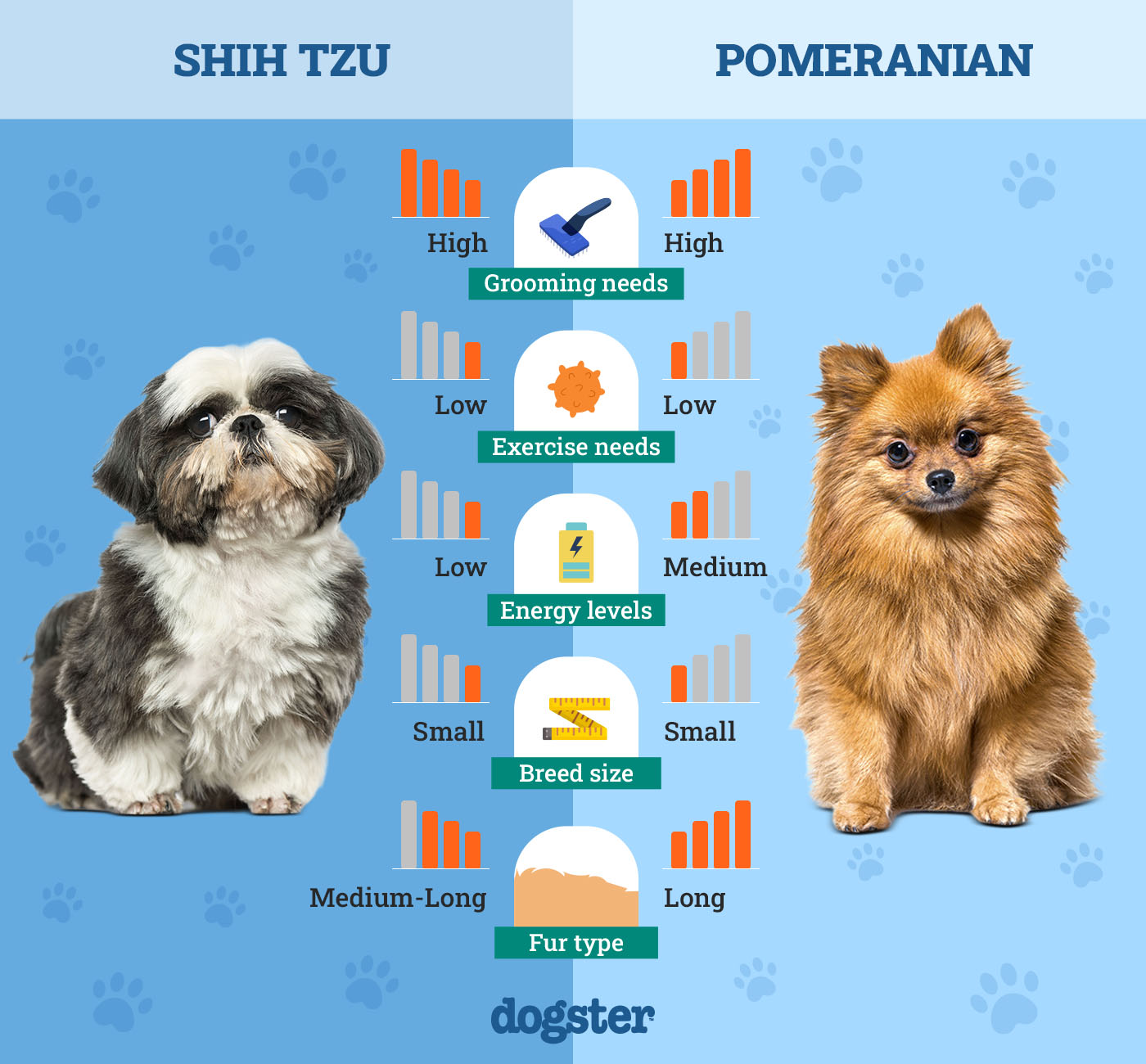
At a Glance
- Average height (adult): 6–7 inches
- Average weight (adult): 3–7 pounds
- Lifespan: 12–16 years
- Exercise: 30 minutes per day
- Grooming needs: Low to moderate
- Family-friendly: Yes, best suited to families with older children
- Other pet-friendly: Often
- Trainability: Smart, generally easy to train, might be a tad mischievous
- Average height (adult): 9–10.5 inches
- Average weight (adult): 9–16 inches
- Lifespan: 10–18 years
- Exercise: Up to an hour per day
- Grooming needs: Moderate
- Family-friendly: Yes
- Other pet-friendly: Often
- Trainability: Intelligent but may be a bit headstrong, needs lots of positive reinforcement

Pomeranian Overview
Though it may be hard for some to believe given their tiny stature, the plucky Pomeranian is the descendent of larger sled-pulling spitz dogs that navigated wintery Arctic terrain for thousands of years. Let’s explore the fluffy ball of joy we know today in more detail.
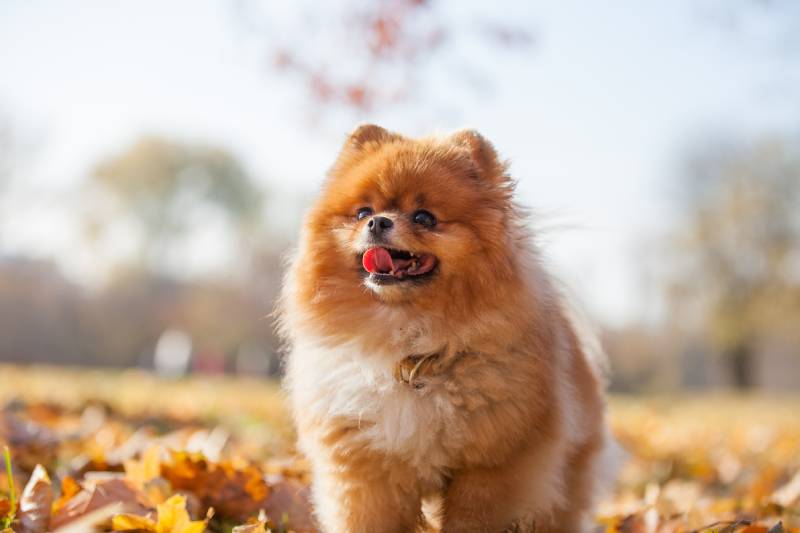
Character
Pomeranians might be minuscule, but they’ll sure make it very difficult for you to overlook them! Their big buzz of a coat is quite fitting, as these dogs have quite explosive (in a good way) personalities and are generally thought to be confident, friendly, active, playful, and spirited.
They’re also known for having a tendency to be vocal, so you might need to instill boundaries and work on a quiet down cue with your Pom in case they get carried away. Pomeranians score five out of five on the American Kennel Club’s “affectionate with family” scale, which is great, but they may fit best into a family with older children.
The first reason for this is that Pomeranians are quite small and delicate, and the other is that, as PetMD explains, they’re quite prone to guarding tendencies. If there are small children at home, they should always be supervised around the Pomeranian.
Training
Pomeranians are alert and clever little dogs that are generally easy to train. Many do have a mischievous streak, however, and sometimes forget how small they are. Some feisty Poms might have a go at jumping up on furniture that’s too high around your home, which could be damaging to their joints or bones.
For this reason, you might want to include training your Pom not to jump up on things as part of your “sessions”.
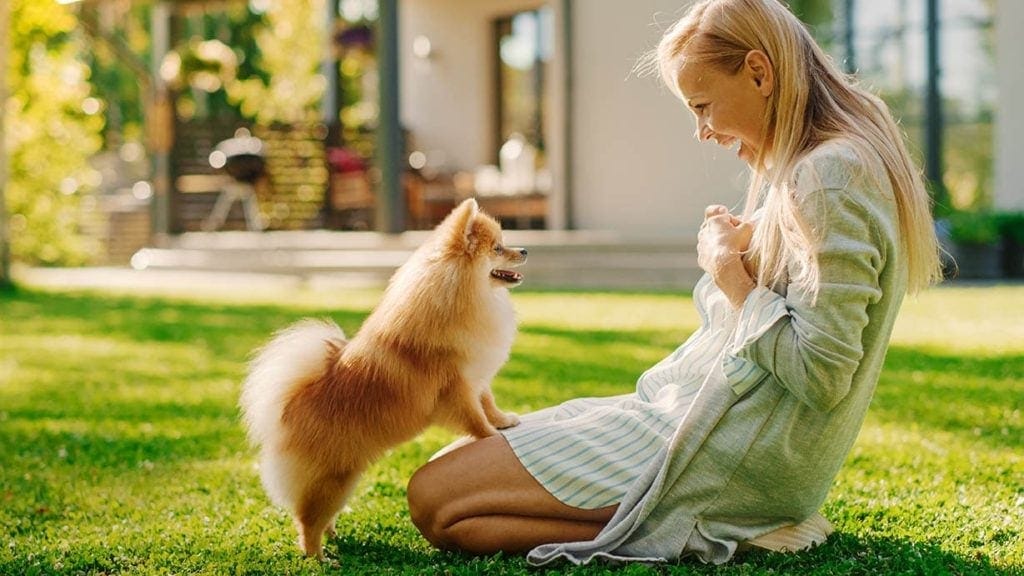
Health & Care
The Pomeranian’s long coat needs to be brushed regularly to prevent knots and tangles from forming. As this kind of coat is also prone to matting, you might want to give your Pomeranian a thorough brushing with a slicker brush at least once a week. The nails should be kept trimmed to ensure they don’t become overgrown and painful.
In terms of general health, Pomeranians have long estimated lifespans and typically enjoy good health, though there are some conditions to watch out for. These include:
- Cataracts
- Tear duct problems
- Collapsing trachea
- Hip dysplasia
- Patellar luxation
- Hypoglycemia
Exercise
Pomeranians are very active little dogs that enjoy going out for walks and exercising, but they don’t require as much exercise as some other breeds. They need around 30 minutes of exercise a day, split into two or three short but brisk walks.
Pomeranians enjoy a range of physical activities, including running, fetching, and general play, so don’t forget to incorporate a bit of fun into their daily routine in addition to the walks!
Just a heads up for spending time outdoors with your Pom—be very mindful of predators. The tiny Pom can be mistaken for prey by hunting birds, so keep your Pom close to you at all times when out and about.
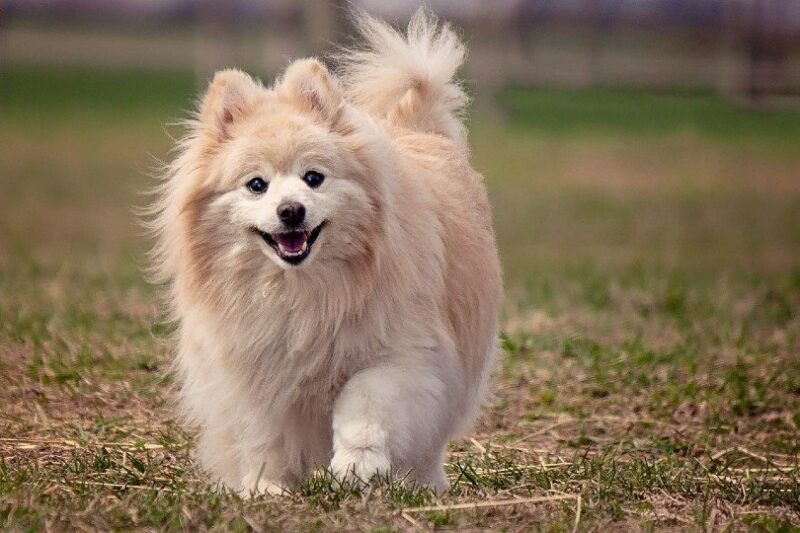
Suitable For:
A Pomeranian would be well-suited to any loving home, but for families with children, they may do best in a family with older children who know how to interact with the Pom appropriately. These dogs do well living in apartments as long as they get enough daily exercise and mental stimulation.

Shih Tzu Overview
The Shih Tzu is an ancient dog breed thought to have been produced by crossbreeding between the Lhasa Apso and the Pekingese. Compared to working breeds, Shih Tzus have had a pretty chilled-out time throughout history as lap warmers and companion dogs. Today, Shih Tzus rank at number 22 on the American Kennel Club’s dog popularity rankings. Let’s explore this further.

Character
Shih Tzus might appear uppity, but they’re really merry little souls with a tendency to quickly befriend everyone around them, whether that’s a human or another dog. They’re very people-oriented, easily pleased, and will be happy to spend their time participating in whatever you’re doing (as long as it’s nothing too strenuous!). Shih Tzus have a special affinity for snoozing and cuddling.
Like Pomeranians, Shih Tzus do well living in apartments. This is not only because of their small size but also their laid-back temperaments and manageable exercise needs. Shih Tzus score five out of five on the AKC’s “good with young children” scale, so they may be a better choice if you have little kids at home (as long as they’re always supervised around one another).
Training
Shih Tzus are highly intelligent dogs but are known for trying to worm their way out of things they don’t want to do by acting cute. If they start rolling onto their back and giving you those puppy-dog-eyes, stick to your course!
Use lots of positive reinforcement and praise when your Shih Tzu gets it right. Be consistent, and you should have them trained up in no time. As with any dog, it’s a good idea to enroll your Shih Tzu in obedience and socialization classes.
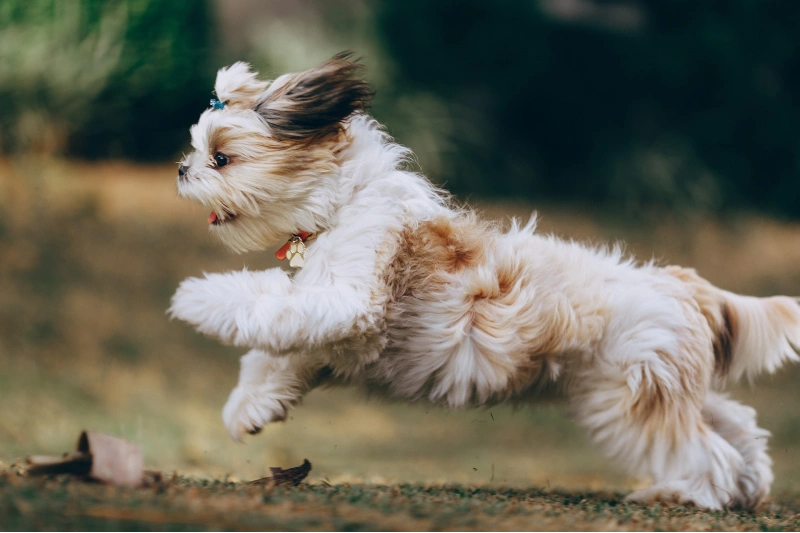
Health & Care
Long-coated Shih Tzus will need to be brushed daily as their coats are more likely to get matted or tangled. Take it section by section and try not to miss the layers closest to the skin. You’ll also want to brush or comb your Shih Tzus mustache and tidy up their topknot daily if they have one. Like other breeds, the nails should be trimmed frequently.
Like Pomeranians, Shih Tzus have a pretty long expected lifespan, but you do need to keep an eye out for certain conditions. These include:
- Obesity
- Eye conditions
- Luxating patellar
- Hip dysplasia
- Brachycephalic syndrome
- Liver shunts
Exercise
Shih Tzus don’t need much exercise, around 30–45 minutes per day, split into a few short walks and play sessions at home. Though Shih Tzus aren’t the most energetic of breeds, exercise is still crucial to their health, especially as they can be prone to obesity.
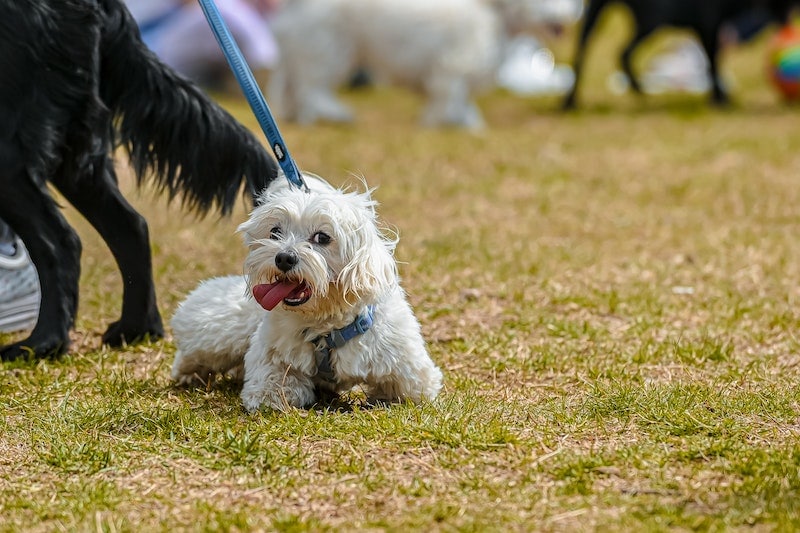
Suitable For:
It’s likely that a Shih Tzu would fit nicely into any home where they’ll receive plenty of love and cuddles. As long as any children in the home are gentle with the Shih Tzu, the Shih Tzu should make a wonderful companion for them and everyone else in the family.

Which Breed Is Right for You?
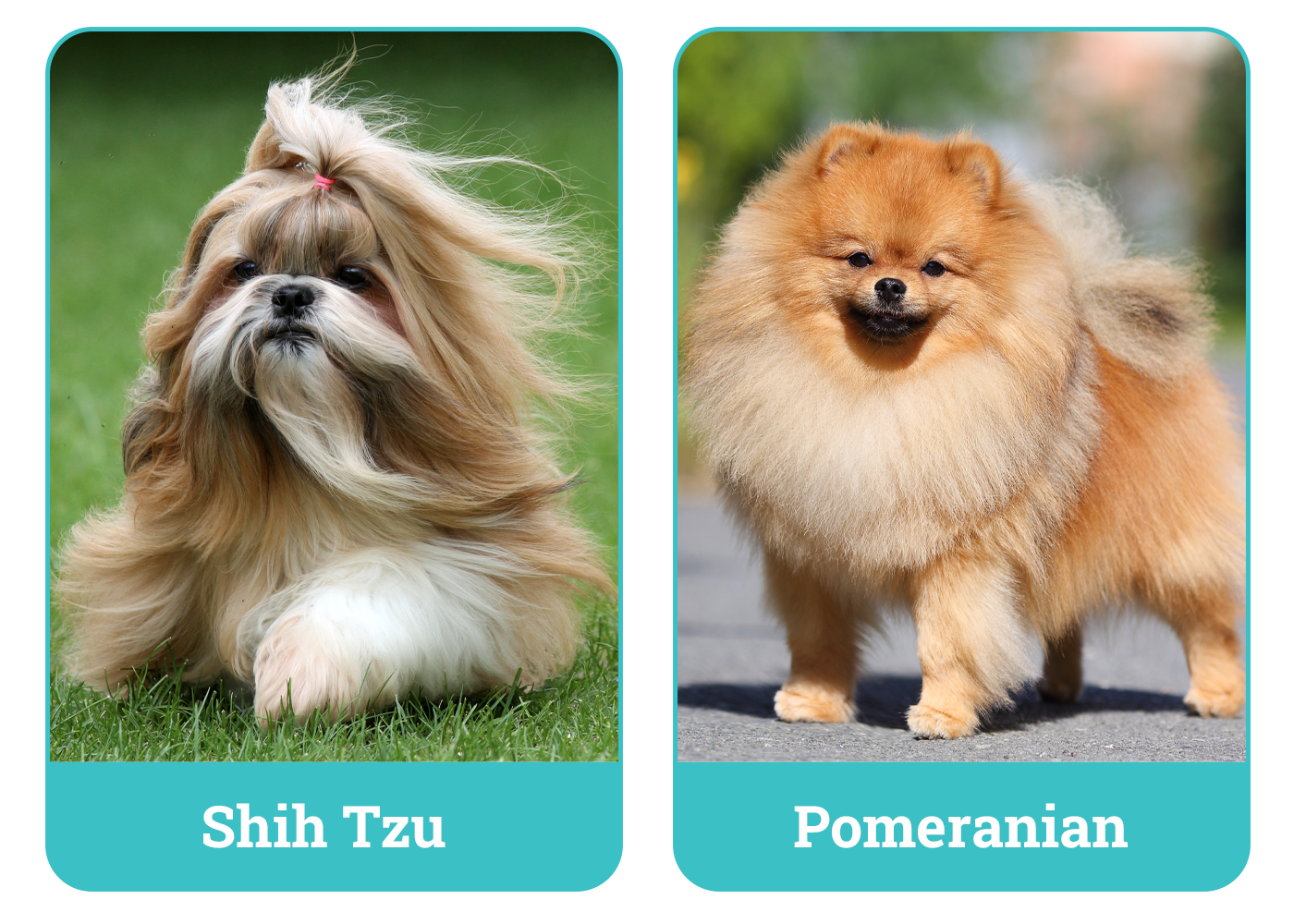
If you’re looking for an alert, energetic, vivacious, and fun-loving companion, the Pomeranian might be the one for you. On the other hand, if you’re looking for a lower-energy dog that’s likely to get along with everyone in the family, you might consider a Shih Tzu. The most important thing, however, is to go for a dog that you truly “gel” with and for whom your home would be the best place, too.
Featured Image Credit: Top – 12122, Pixabay | Bottom – ignartonosbg, Pixabay
